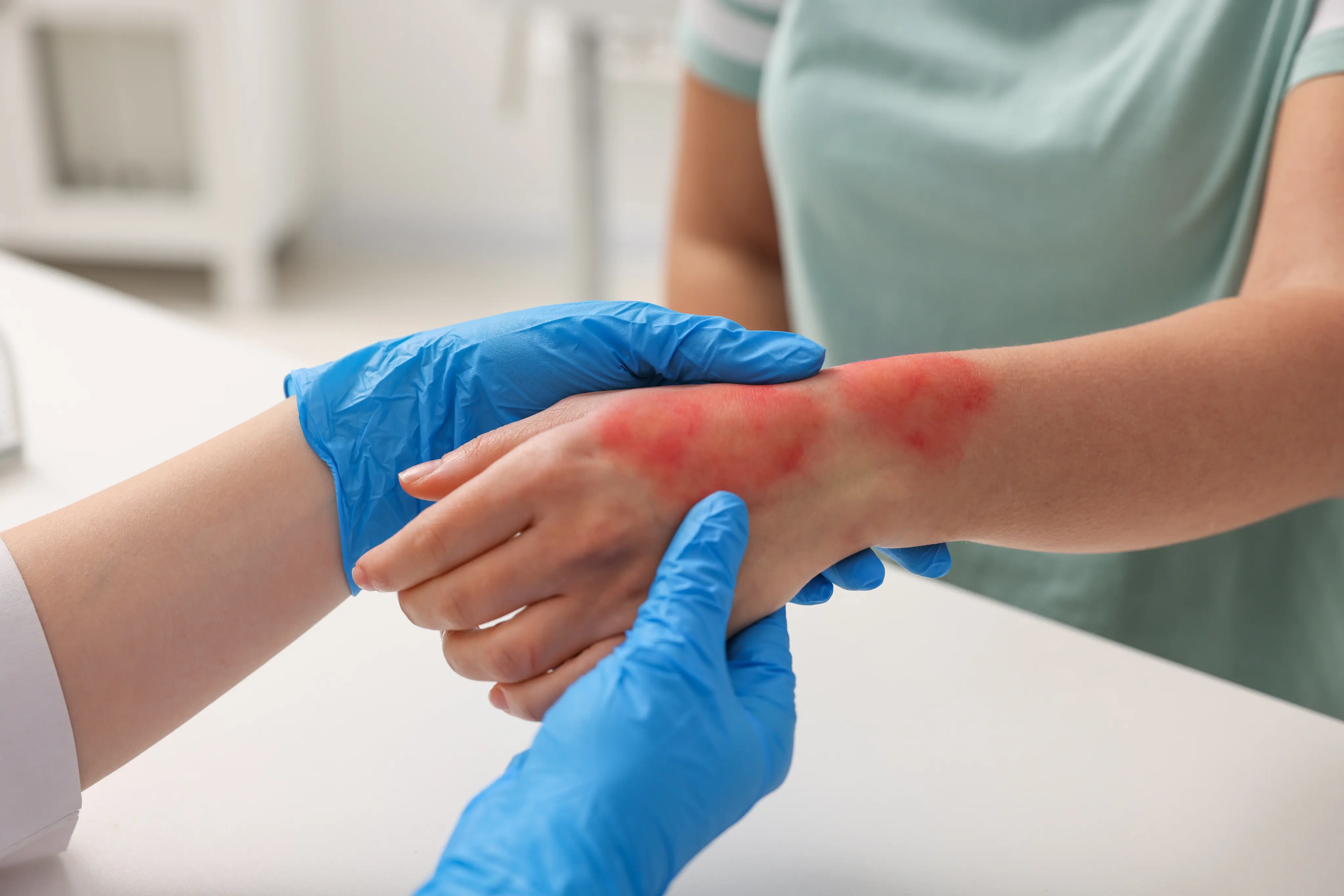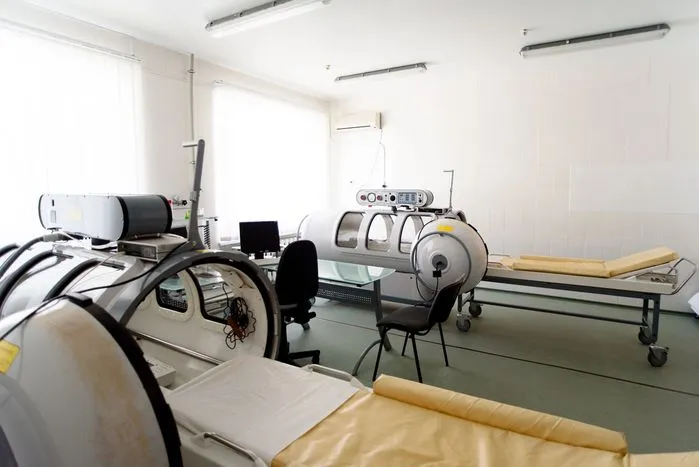Throughout history, burn wounds have posed a significant challenge to healers and medical practitioners. Before the advent of modern medicine, ancient civilizations relied on natural remedies, herbal treatments, and even spiritual practices to treat burn wounds. While many of these early methods were based on trial and error, they laid the groundwork for today's advanced techniques. From honey and aloe vera in ancient Egypt to battlefield innovations in the Renaissance and the groundbreaking discoveries of germ theory, burn wound care has evolved significantly over the centuries. This blog explores the fascinating journey of burn wound treatment—from early civilizations to modern-day medical advancements—and highlights how traditional knowledge has influenced cutting-edge innovations in wound healing.
Ancient Methods of Treating Burn Wounds
Before the advent of modern medicine, ancient civilizations developed various techniques to treat burn wounds, relying on natural remedies, herbal treatments, and even spiritual beliefs. While these methods were based on trial and error, many laid the foundation for today’s understanding of burn wound care.
Early Civilizations’ Use of Natural Remedies
One of the earliest approaches to treating burn wounds involved using naturally occurring substances with soothing, antibacterial, or protective properties.
- Honey: Ancient Egyptians, Greeks, and Chinese healers used honey as a wound dressing due to its antibacterial properties. Honey helps prevent infections in burn wounds by creating a protective barrier and drawing moisture away from bacteria.
- Plant Extracts: Aloe vera, still widely used today, was a common treatment for burn wounds in ancient Egypt, India, and China. Other plants, such as myrrh and turmeric, were applied to burns to reduce pain and inflammation.
- Animal Fat and Oils: Civilizations like the Romans and Greeks applied animal fat and olive oil to burn wounds, moisten the skin, and promote healing. The oil formed a protective layer, preventing excessive drying and cracking.
Herbal Treatments and Poultices for Burn Wounds Care
Herbs played a crucial role in early burn wound care, and different cultures developed their own healing mixtures.
- Egyptians: The Ebers Papyrus (circa 1550 BCE) describes using resin, honey, and animal grease to treat burn wounds, ensuring protection and hydration.
- Chinese Medicine: Traditional Chinese healers created herbal pastes made from sesame oil, pearl powder, and ginseng to reduce inflammation and enhance skin regeneration.
- Ayurveda (India): Ancient healers used sandalwood paste, turmeric, and neem to soothe burn wounds and prevent infection. Turmeric, in particular, was prized for its antibacterial and anti-inflammatory effects.
- European Herbalism: In medieval Europe, healers created poultices made from comfrey, chamomile, and yarrow to aid in burn wound care, promote skin repair, and relieve pain.
Religious and Superstitious Practices in Wound Healing
Beyond physical treatments, many ancient cultures believed that spiritual and mystical forces influenced the healing of burn wounds.
- Ancient Egyptians: Medical papyri indicate that Egyptian priests often combined medical treatments with prayers and incantations to invoke divine healing. They believed that burn wounds required both physical and spiritual care.
- Medieval Europe: Some European communities saw burn wounds as a punishment from divine forces and sought healing through religious relics, holy water, or blessings from clergy. Saints associated with healing, such as St. Roch and St. John of God, were often prayed to for relief.
- Indigenous Practices: Many indigenous tribes in Africa and the Americas performed healing ceremonies, using chants and rituals alongside herbal remedies to cleanse and protect burn wounds.
While these ancient methods may seem primitive, many natural remedies—such as honey, aloe vera, and turmeric—remain valuable in burn wound care today. The evolution of these treatments has contributed to modern advancements, blending traditional knowledge with scientific research.
Advancements in Medieval and Renaissance Medicine
During the medieval and Renaissance periods, medical knowledge advanced significantly, improving methods for treating burn wounds. While many treatments were still based on traditional herbal remedies and religious beliefs, the introduction of surgical techniques, antiseptics, and battlefield medicine played a crucial role in shaping how to treat burn wounds.
Introduction of Basic Surgical Techniques for Severe Burn Wounds
As medical practices evolved, physicians and surgeons developed new methods to treat burn wounds, particularly severe cases that required more than just herbal applications.
- Cauterization: One of the earliest surgical techniques used to treat burn wounds involved cauterization—burning the wound with a hot iron or boiling oil to prevent infection. While painful and often leading to severe scarring, this method was widely practiced in medieval Europe, especially by military surgeons.
- Debridement: Physicians in the Renaissance period, influenced by early anatomical studies, began removing dead or damaged tissue from burn wounds to encourage healing. This practice, known as debridement, helped prevent infection and was an essential step in wound care.
- Skin Grafting Experiments: While modern skin grafting was not yet developed, early physicians in the 16th century experimented with transplanting skin from one area of the body to another to treat burn wounds. These rudimentary techniques laid the foundation for future advancements in burn treatment.
Use of Early Antiseptics and Salves
With a growing understanding of infection and wound care, medieval and Renaissance healers began incorporating antiseptics and specialized salves into burn wound care.
- Wine and Vinegar: Medieval surgeons, including the famous French military surgeon Ambroise Paré (1510–1590), used wine and vinegar to clean burn wounds. These substances had mild antiseptic properties and helped reduce infection risks.
- Herbal Ointments: Traditional healers created salves using natural antiseptics such as honey, myrrh, and lavender oil. These ingredients were believed to soothe burn wounds and promote faster healing.
- Egg Whites and Animal Fats: Some Renaissance physicians recommended applying egg whites or animal fat to burn wounds to create a protective barrier and retain moisture, a concept similar to modern hydrocolloid dressings.
The Role of Battlefield Medicine in Shaping How to Take Care of Burn Wounds
Warfare during the medieval and Renaissance periods significantly influenced medical advancements, as battlefield surgeons had to treat burns caused by fire, gunpowder, and boiling oil.
- Military Surgeons and Innovation: In the late medieval period, battlefield surgeons like Henri de Mondeville and later Ambroise Paré sought alternatives to cauterization. Paré, in particular, introduced a gentler approach using a mixture of egg yolk, rose oil, and turpentine, which became a major advancement in caring for burn wounds without excessive pain and scarring.
- Gunpowder and Burn Injuries: The use of gunpowder in warfare led to an increase in burn-related injuries. Surgeons developed new techniques for treating burn wounds caused by explosions, focusing on infection control and wound closure.
- Field Dressing Innovations: The need for mobile and effective wound care led to using clean linen bandages, an early form of gauze for burn wounds, to cover injuries and protect them from dirt and bacteria.
19th and Early 20th Century Developments
The 19th and early 20th centuries brought revolutionary changes to burn wound care, driven by the discovery of germ theory, the introduction of antiseptics and specialized dressings, and advancements in hospital treatments. These developments significantly improved patient survival rates and laid the foundation for modern burn wounds treatment.
Discovery of Germ Theory and Its Impact on Burn Wounds Care
Before the 19th century, the cause of infections in burn wounds and other injuries was poorly understood. Many believed in the miasma theory—the idea that diseases were caused by "bad air." However, the groundbreaking work of scientists such as Louis Pasteur and Joseph Lister changed how burn wound care was approached.
- Pasteur’s Germ Theory (1860s-1870s): French scientist Louis Pasteur demonstrated that microorganisms were responsible for infections. His research led to the development of sterilization techniques that would later influence burn wound care.
- Lister’s Antiseptic Surgery (1867): British surgeon Joseph Lister applied Pasteur’s findings to surgery, introducing carbolic acid (phenol) to sterilize wounds and surgical instruments. This drastically reduced infections in burn wounds and other injuries.
- Impact on Burn Treatment: The recognition that bacteria caused infections led to more careful wound cleaning, sterilization of medical tools, and the developing of antiseptic dressings for burn wounds.
Introduction of Antiseptics, Dressings, and Gauze for Burn Wounds
With germ theory established, medical professionals began developing antiseptic solutions, dressings, and gauze for burn wounds to prevent infections and promote healing.
- Carbolic Acid and Iodine Solutions: Doctors started cleaning burn wounds with antiseptic solutions such as carbolic acid, iodine, and hydrogen peroxide to kill bacteria and reduce the risk of sepsis.
- Development of Sterile Dressings: The late 19th century saw the rise of sterile, individually wrapped dressings, which were crucial in preventing contamination of burn wounds. This shift improved wound management in hospitals and battlefields alike.
- Use of Gauze for Burn Wounds: Soft, absorbent gauze became a standard wound dressing material. It helped protect the injured area, prevented infection, and absorbed excess fluids, allowing for a cleaner healing process. These gauze dressings were often soaked in antiseptic solutions for added protection.
The Role of Hospitals in Burn Treatment Advancements
The expansion of hospitals in the 19th and early 20th centuries gave patients better access to medical care, improving burn wound care.
- Establishment of Specialized Wound Care Units: Hospitals began dedicating resources to treating serious wounds, including burn wounds, and trained medical staff oversaw patient recovery.
- Advancements in Surgical Techniques: The introduction of skin grafting and surgical debridement became more common in hospitals, helping patients with deep burn wounds recover with less scarring.
- World War I and Medical Innovations: The large number of burn injuries from explosives and chemical warfare in World War I led to major advancements in how to take care of burn wounds. Surgeons developed new techniques for cleaning, dressing, and closing burn injuries, which also influenced civilian medical practices.
Modern Burn Wound Care Innovations
The 20th and 21st centuries have seen remarkable advancements in burn wound care, driven by scientific research, technological breakthroughs, and a deeper understanding of wound healing. These innovations have significantly improved survival rates, reduced complications, and enhanced the quality of life for burn victims.
Mid-20th Century
1. The Development of Sterile Techniques and Antibiotics
By the mid-20th century, medical professionals recognized the critical role of sterility in preventing infections in burn wounds.
- Sterile Surgical Environments: Hospitals adopted strict sterilization protocols, ensuring that all tools, dressings, and operating rooms were bacteria-free. This reduced the risk of sepsis and other complications in burn patients.
- Antibiotic Revolution: The discovery of antibiotics like penicillin (1928) and their widespread use in the 1940s transformed burn wound care. Before antibiotics, bacterial infections in burn wounds often led to fatal complications. With topical and systemic antibiotics, infections could be controlled more effectively.
2. Introduction of Skin Grafting for Severe Burn Wounds
As medical knowledge progressed, doctors sought better ways to treat extensive burn wounds, leading to the development of skin grafting techniques.
- Autografts (Self-Skin Grafts): Surgeons began using a patient’s skin to cover burn wounds, reducing the risk of rejection and promoting faster healing.
- Allografts and Xenografts: When self-skin grafts were unavailable, donor skin (allografts) or animal skin (xenografts) were used as temporary coverings to protect burn wounds from infection and dehydration.
- Expansion of Burn Centers: With the rise of specialized burn treatment facilities, more patients had access to advanced skin grafting procedures, improving survival rates for severe burns.
3. Early Studies on Wound Moisture Control
A major shift in burn wound care came with the realization that keeping wounds moist rather than dry could accelerate healing.
- Occlusive Dressings: In the 1960s, researchers discovered that wounds healed faster when covered with airtight dressings, which prevented scab formation and encouraged new skin growth.
- Hydrophilic Ointments: Doctors started using moisture-retaining ointments and bandages, which reduced pain and improved healing outcomes for burn wounds.
Late 20th to 21st Century
1. Advances in Gauze for Burn Wounds, Hydrogel, and Silicone-Based Dressings
Traditional gauze for burn wounds evolved into more sophisticated dressings that enhanced healing and minimized discomfort.
- Antibacterial and Non-Adherent Gauze: Modern gauze for burn wounds now incorporates antimicrobial agents like silver or iodine to prevent infections while ensuring the dressing does not stick to healing tissue.
- Hydrogel Dressings: These water-based dressings keep burn wounds moist, reducing pain and promoting cell regeneration. Hydrogel also provides a cooling effect, offering relief for burn patients.
- Silicone-Based Dressings: Medical-grade silicone dressings have become a standard in burn wound care. They help reduce scarring and prevent excessive dryness. These dressings also create a protective barrier that reduces irritation.
2. Stem Cell Therapy and Regenerative Medicine
The late 20th and early 21st centuries brought the possibility of regenerating skin using cutting-edge medical techniques.
- Stem Cell-Based Skin Regeneration: Researchers have explored using stem cells to regrow damaged skin, offering potential solutions for severe burn wounds that traditional treatments cannot fully heal.
- Platelet-Rich Plasma (PRP) Therapy: PRP accelerates wound healing by stimulating cell growth and tissue repair in burn wounds.
- Tissue Engineering: Scientists have developed bioengineered skin substitutes using a patient’s cells to create living grafts that integrate naturally with the body.
3. Technological Innovations: Bioengineered Skin and Artificial Skin Grafts
Advancements in biotechnology have led to the creation of artificial skin substitutes, providing new hope for burn victims.
- Bioengineered Skin: Companies and researchers have developed lab-grown skin using human cells, collagen, and synthetic materials to create functional skin replacements for burn wounds.
- Spray-On Skin Therapy: Developed in the 2000s, this technique involves spraying a suspension of a patient’s skin cells onto burn wounds, significantly speeding up the healing process.
- Smart Wound Dressings: The latest innovations include dressings embedded with sensors that monitor moisture levels, bacterial presence, and healing progress in burn wounds, allowing doctors to adjust treatment in real-time.
The Future of Burn Wound Care
As technology and medical research advance, the future of burn wound treatment looks increasingly promising. Scientists and medical professionals are exploring cutting-edge innovations such as nanotechnology, artificial intelligence (AI), robotics, and personalized medicine to enhance healing, reduce complications, and improve patient outcomes. These advancements aim to make burn wound care more efficient, precise, and tailored to individual patients’ needs.
A. Potential for Nanotechnology and Smart Dressings
Nanotechnology is emerging as a revolutionary approach to treating burn wounds. It offers targeted treatments at the cellular level, and smart dressings infused with nanomaterials could dramatically improve the healing process.
- Nanoparticle-Based Antimicrobial Treatments: Researchers are developing nanomaterials that deliver antimicrobial agents directly to burn wounds, reducing infections more effectively than traditional antibiotics. Silver and copper nanoparticles, for example, have powerful antibacterial properties that can prevent complications in burn patients.
- Self-Regulating Smart Dressings: Future dressings for burn wounds may be equipped with nanosensors that monitor temperature, bacterial presence, and moisture levels. These smart dressings can release antibiotics or hydration agents automatically when needed, eliminating the need for frequent dressing changes and minimizing discomfort.
- Regenerative Nanomaterials: Scientists are exploring the use of nanofibers and nanoscaffolds that can mimic human skin structure, stimulating tissue regeneration in severe burn wounds. These materials may one day replace traditional skin grafts.
B. AI and Robotics in Wound Monitoring
Artificial intelligence (AI) and robotics are set to play a significant role in the future of burn wound care, offering advanced monitoring and precision treatments.
- AI-Powered Wound Assessment: AI-driven imaging systems can analyze burn wounds with extreme accuracy, detecting signs of infection, measuring wound depth, and predicting healing times. This technology can assist doctors in making more precise treatment decisions.
- Robotic-Assisted Skin Grafting: Robotics is being developed to assist in delicate surgical procedures, such as burn wounds and skin grafting. These systems can improve precision, reduce surgery times, and minimize scarring by ensuring optimal placement of grafts.
- Automated Wound Cleaning and Dressing Application: Robotic systems could eventually be used to clean and dress burn wounds with minimal human intervention, ensuring consistency in treatment and reducing the risk of contamination.
The Role of Personalized Medicine in How to Take Care of Burn Wounds
Personalized medicine—tailoring treatment to an individual’s genetic and biological makeup—is expected to revolutionize burn wound care in the coming years.
- Genetic-Based Wound Healing Treatments: Scientists study how genetic variations influence wound healing. In the future, doctors may use genetic testing to determine the best treatment for each patient’s burn wounds, selecting personalized therapies that optimize recovery.
- Customized Skin Grafts and Regenerative Therapy: With advancements in 3D bioprinting and stem cell therapy, burn patients may soon receive custom-made skin grafts that match their tissue. This would reduce rejection risks and improve healing outcomes.
- Precision Medicine for Pain and Inflammation Management: Personalized pain management strategies, including targeted drug therapies based on a patient’s genetic makeup, could reduce discomfort and inflammation in burn wounds more effectively than current one-size-fits-all approaches.
Conclusion
The treatment of burn wounds has come a long way, transforming from rudimentary herbal remedies and superstitious beliefs to sophisticated, scientifically backed medical interventions. Each era has contributed vital knowledge that has shaped modern burn wound care, from using antiseptics and sterile dressings to the revolutionary developments in skin grafting and regenerative medicine. As we move forward, the future of burn wound treatment looks increasingly promising, with advancements in nanotechnology, artificial intelligence, and personalized medicine paving the way for more effective and tailored healing solutions. By combining centuries of wisdom with groundbreaking innovations, the field of burn wound care continues to evolve, offering new hope for patients and ensuring better recovery outcomes than ever before.



.webp)

.avif)